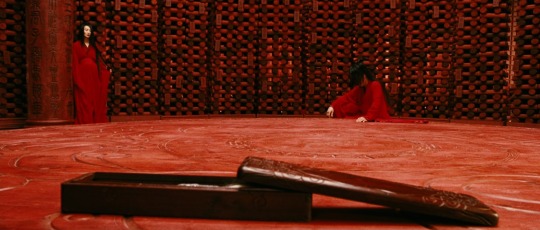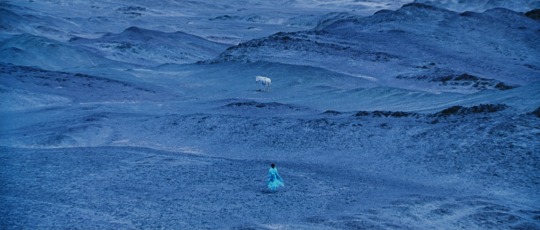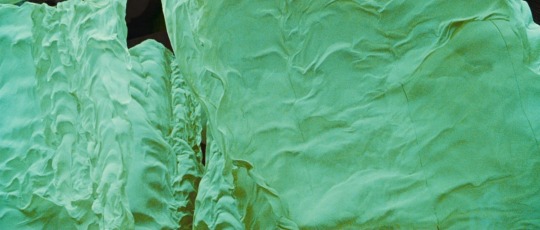#Miramax acquired American market distribution rights but delayed the release for nearly two years (...)
Text









Hero (2002)
#as per wikipedia:#Miramax acquired American market distribution rights but delayed the release for nearly two years (...)#(...) Quentin Tarantino eventually convinced Miramax to open the film in American theaters on 27 August 2004.#hence why IIRC it's listed as 2004 in some places#hero 2002#zhang yimou#hero#2002#2000s film#2000s movies#screencaps#colors#cinematography
48 notes
·
View notes
Text
The Complicated Licensing History of Princess Mononoke
It’s hard to not know of the impact of Studio Ghibli. Founded in 1985 by Hayao Miyazaki, Isao Takahata, and Toshio Suzuki, it has grown to be one of the most well-known film studios in the world, producing animated films that spark wonder and curiosity in all that watch them. One of its most well-known titles comes in the more mature Princess Mononoke, an animated epic about the environment, conflict, and humanity during the Muromachi period. That there is no clear line of good and evil makes the story all the more compelling and it garnered a lot of praise upon its initial release in 1997, even making it the first animated film to win the Japan Academy Prize for Picture of the Year. Many are fond of the original, but the history of its release in the United States is a surprisingly complicated one. Today is the anniversary of the Japanese release, so let's take a look at the wild history of how this classic got to the US!
Image via GKIDS Films
Although Studio Ghibli is well known now, it was taken much less seriously by distributors in the beginning. The studio had a rough initial start with Nausicaa’s release in the United States by New World Pictures, where the film underwent a significant overhaul. Retitled Warriors of the Wind, nearly a quarter of the movie was cut, resulting in many of the environmental themes being lost. Miyazaki was notoriously horrified by this treatment and disavowed this version. As such, when Disney approached Studio Ghibli in 1997 for worldwide theatrical and home video distribution rights (excluding Asia), Ghibli was clear in their contract of two things: Disney wasn’t allowed creative control or merchandising rights.
Disney looked at Princess Mononoke with a bit of concern, and not without reason. Ghibli films are different than the usual fare of Disney media, and Disney feared that it might not be marketable to American audiences. Some portions, such as the violence and the lack of overt romance concerned some of the higher-ups, so it ended up being released under Miramax, a Disney subsidiary at the time.
Steve Alpert, the head of international sales of Ghibli at the time, mentions that there was a fear that Disney would want to change too much of the movie, as the concept of what was considered a good dub in Disney consisted of mostly localization rather than direct translation. In a recent AMA, Alpert said that "trying hard not to adapt the film and harder to get the American distributors to recognize and feature the film's existing appeal," is one of the hardest parts of adapting a Ghibli film. While author Neil Gaiman was hired to pen the English script, Ghibli still sent Alpert in with a specific set of instructions, some of which included: not adding in slang, keeping the culture of Ashitaka and the class of Lady Eboshi distinct, and not changing the title.
According to Alpert’s memoir, Sharing a House With the Neverending Man: 15 Years at Studio Ghibli, Miramax executives seemed to have a lot of trouble, specifically in trying to delineate good and evil in a story where the lines are blurred. Of course, there is the rumor of when dealing with Harvey Weinstein — head of Miramax at the time — and his demand to cut the movie’s content by a significant amount, Miyazaki’s producer (Suzuki) gave him a sword in the middle of a meeting with Miramax employees, and declared, "Princess Mononoke, no cuts!" Indeed, there were no cuts to the movie, but it didn’t garner as much attention compared to Spirited Away years later, only grossing about $2.3 million in its limited release.
Image via GKIDS Films
The differences didn’t end there. While the VHS release only had the dubbed audio, the DVD was originally set to be released only with English and French audio, which confused the anime community. Wanting the original Japanese audio to be included, fans organized petitions asking Disney to reconsider the DVD selection, which garnered a few thousand signatures. In the summer of 2000, Buena Vista "delayed" the DVD to allow for the Japanese track, and the full DVD was released in December 2000, which had the complete English, Japanese, and French audio.
In September 2011, film distribution company GKIDS acquired the American rights to distribution of 13 of Studio Ghibli films from Disney, including that of Princess Mononoke. GKIDS also put out their own DVD release of the Studio Ghibli collection in 2017, which had some differences from the Disney/Miramax release. The GKIDS release of Mononoke included the original English dub and the same or similar transfer as the Disney version, but issued a set of new English subtitles based off the original Japanese instead of the dub script issued by Miramax. GKIDS’ release also included hosting a yearly limited screening event of Studio Ghibli films, which Mononoke became part of in 2018. Most of the Ghibli collection remains with GKIDS up to the present day.
Image via GKIDS Films
The only copy of Princess Mononoke I have is my worn VHS from the Ghibli ga Ippai Collection, well-watched, well-loved. While my copy is from the Japanese side, my friends have a different story to tell. Their first encounter with the movie is on their old Miramax VHS, sometimes on the DVD if they had a DVD player back then. Still, as we all watched in awe when we were young, there was a complicated backstory behind the movie we all loved, one none of us could have expected.

What was your first encounter with Princess Mononoke, and what do you most remember about it? Let us know in the comments!
Noelle Ogawa is a contributor to Bubbleblabber and Cup of Moe. She can be found on Twitter @noelleogawa.
Do you love writing? Do you love anime? If you have an idea for a features story, pitch it to Crunchyroll Features!
1 note
·
View note